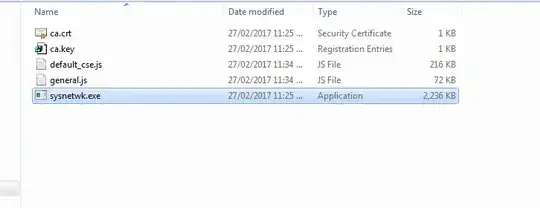As many people suggested, you probably got a virus or malware.
This question was already answered here: Help! My home PC has been infected by a virus! What do I do now?
Please just read the accepted answer carefully.
If you do not feel yourself technical enough to perform it by yourself, then go to this answer for non-technical users
However, I will still try to suggest the following steps from my own experience:
1) Turn off your PC and try to scan it using boot CD, e.g.:
Rescue Disk from Kaspersky, available for free (would be my first choice)
List of other free bootable anti-viruses
Download and burn it on another / non-infected computer.
By going this way, you shutdown your OS with any malware/viruses that are there and boot from independent OS with antivirus, which will scan your hard drive for possible issues.
2) If it will find something, try to think about how you got infected. This will be needed later, to prevent getting re-infected through the same vulnerability.
3) If you did not have a backup of your data, copy all your data from the infected PC, after you did a cleanup with boot CD. Do not boot up you OS (Windows) at this step, just connect your hard drive to another PC with updated anti-virus software and copy all the data.
4) Reinstall OS (Windows). Yes, this step is really needed, although not obvious. I also was long time misleadingly thinking, that if I have removed the virus/malware from my PC, the issue is closed. However, you should realise, that after you got a virus/malware, this is NOT YOUR PC anymore. No antivurus could guarantee, that 100% of viruses/malware were found and removed. Maybe you got multiple viruses. Maybe a hacker logged into your PC trough a backdoor and did some custom changes on it. And so on. The only way to be sure it will be clean is to reinstall your OS (Windows).
Please also have a look on this question:
Is making a clean install enough to remove potential malware?
5) Do all software updates. Now you need to analyse the info from the step (3). How the malware got into your PC? Through outdated browser? Then update it, including plugins like Adobe Flash and Shockwave, etc. It was a phishing mail with a link that you followed? Educate yourself with a help of Google, how to recognise phishing. You installed some software from untrusted source? Do not install it again. And so on.
6) Set up a regular automated data backup. There are tools integrated into Windows 7 already, please see official Microsoft web site for more information on it:
https://support.microsoft.com/en-us/help/17127/windows-back-up-restore
7) Continue to regularly perform software updates and regularly educate yourself for IT security.
 When command prompt opens and closes suddenly. It changes proxy settings of Google Chrome and Every browsers present in the system.
When command prompt opens and closes suddenly. It changes proxy settings of Google Chrome and Every browsers present in the system.